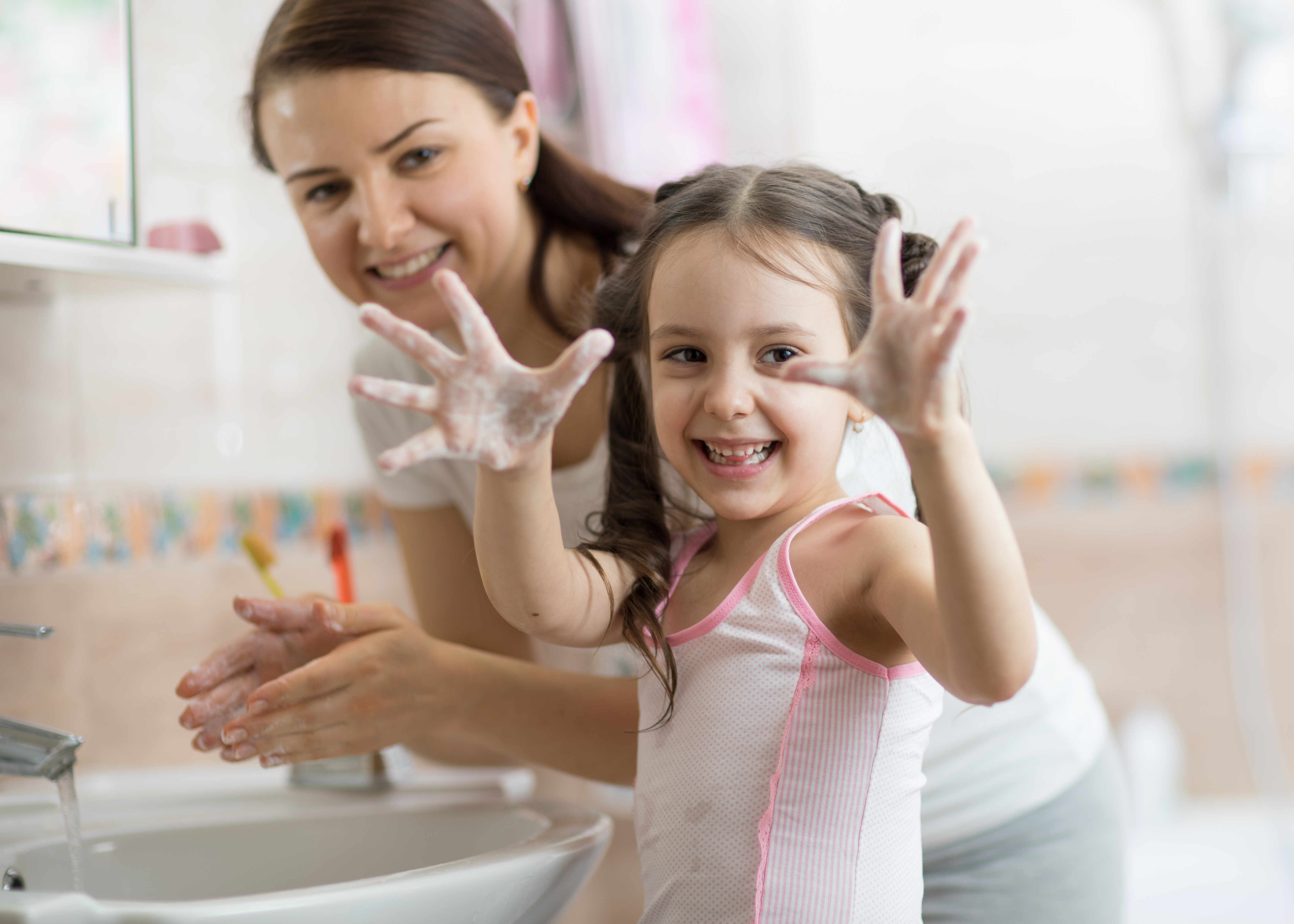When Children Should be Handwashing in Schools
 When should children be handwashing in schools? How do students view handwashing in relation to school health? If educators, administrators, and parents want a healthy and safe place for children to learn, it is imperative these questions be answered and addressed.
When should children be handwashing in schools? How do students view handwashing in relation to school health? If educators, administrators, and parents want a healthy and safe place for children to learn, it is imperative these questions be answered and addressed.
The American Cleaning Institute (ACI) conducted a survey to uncover this valuable information. A total of 512 children ages 8-17 and 521 parents of children aged 8-17 years weighed in, and here's what it found:
Children's Handwashing in Schools
The survey given to children asked focused questions and gathered responses about their handwashing in schools.
The study found that 43% of children are not washing their hands enough. The most common reason for not washing hands as often as they should? Lack of time, with almost half saying the school schedule didn't allow time for handwashing before lunch. The next most popular response was that the students didn’t like going to the bathroom at their school, followed by:
- The lack of necessary supplies in the bathroom.
- The lack of reminders.
- Unsanitary or unclean bathrooms.
- Not seeing other students washing their hands.
How to Encourage Handwashing in School
When it came to the school’s bathroom, over half of the responses indicated the children were bothered by the smell and that it needed to be cleaned more often. More soap would have made a difference to 28% of respondents, and 21% said they would wash more frequently if handwashing posters were present.
When asked about the frequency of their handwashing, these were the children's responses:
- 89% always wash after using the toilet.
- 65% always wash up before eating lunch.
- 53% wash their hands after coughing, sneezing, or blowing their nose.
According to the survey, nearly all students agreed that handwashing will help prevent illness. Additionally, three-fourths agreed that watching a friend wash their hands is a good reminder for them to do the same. As many as 20% of students said they've seen their parents use the bathroom and not wash hands afterward. It is clear students have a strong understanding of the value of hand hygiene, but the lack of compliance from peers and parents does impact their behavior.
Parents' perceptions of Handwashing in Schools
In addition to questioning students, the study also collected data about parents' knowledge of children’s handwashing behaviors in school. (None of the parents were related to the surveyed students.)
The survey indicated that 58% of parents had donated hand sanitizer for use at school, compared to 28% for paper towels and 16% for hand soap. It found that 83% of parents believed the school always has all of the supplies and drying equipment needed to complete the task of handwashing.
With respect to times when children wash their hands:
- 76% of the parents surveyed believed that their child always washes their hands after using the toilet.
- 59% believed their child washes their hands before lunch.
- 51% reported their child washes their hands after coughing, sneezing, or blowing their nose.
When it came to perceptions of their child’s handwashing behavior, most parents reported always making their child wash their hands at home before eating meals but said their child forgets to wash at other recommended times. A staggering 28% said that their child doesn’t use the bathroom at school due to a lack of cleanliness.
Pitfalls and recommendations for handwashing in schools
As the survey findings prove, there are various pitfalls regarding hand hygiene and school health. Among the most prominent are:
- Lack of time.
- Uncleanliness of bathrooms.
- Inadequate materials.
While these are all serious barriers in allowing students to achieve good hand hygiene, there are solutions to these challenges. Since most school bathrooms contain multiple sinks, kids can wash up before lunch in minutes. Teachers can allot just 5-10 minutes right before lunch to take their kids down to the bathroom. That way, each child can wash their hands for the appropriate amount of time.
Uncleanliness is more of a janitorial issue, which may largely be caused by understaffing. However, teachers can instruct kids to report any messes or empty dispensers promptly, which will help janitors stay on top of problems. Inadequate materials go hand in hand with the cleanliness problem as well. When accepting donations for cleaning supplies, instead of providing a catch-all list, teachers can prioritize what they need parents to bring in most. This should encourage more hand soap donations than hand sanitizers.
Finally, to address the problem of simple unwillingness, there's a solution to that too. The more interactive and fun a task is, the more likely children are to participate in it. CleanTech® Fully Automated Handwashing Stations from Meritech is the best solution for ensuring effective handwashing for school health because it's fast, user-friendly, and low maintenance. A CleanTech® hand wash removes more than 99.9% of harmful pathogens in a single 12-second wash and rinse cycle. The experience is fun and leaves hands feeling clean and hydrated which will encourage more frequent use.
To learn more about Meritech and how we can help students adopt better handwashing practices for school health,contact us today!






